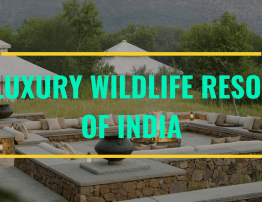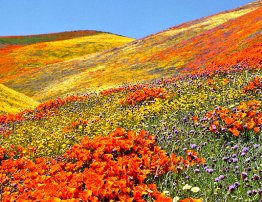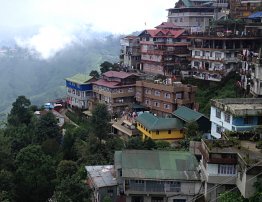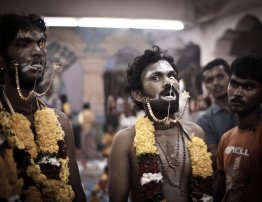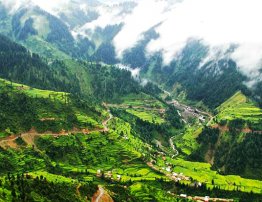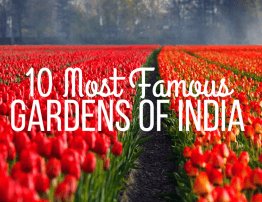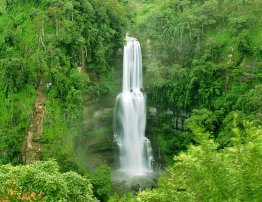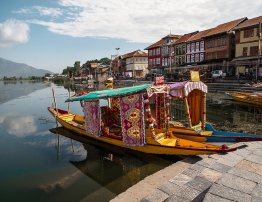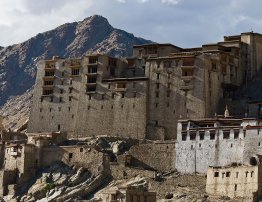Kalimpong
Introduction:
Kalimpong is a hill station in the Mahabharat Range in the Indian state of West Bengal. The town is the headquarters of the Kalimpong subdivision, a part of the district of Darjeeling . The Indian Army's 27 Mountain Division is located on the outskirts of the town. Kalimpong is known for its educational institutions many of which were established during the British colonial period. It used to be a gateway in the trade between Tibet and India prior to China's, Kalimpong, located on a ridge overlooking the Teesta River, is a tourist destination owing to its temperate climate and proximity to popular tourist locations in the region. Horticulture is also important to Kalimpong: it has a flower market notable for its wide array of orchids; nurseries, which export Himalayan grown flower bulbs, tubers and rhizomes, contribute to the economy of Kalimpong. The Kalimpong Science Centre, established under the DGHC (Darjeeling Gorkha Hill Council) in 2008 is a recent tourist attraction. The Science Centre, which provides for scientific awareness among the school students of the town and the locals,is located on the Deolo Hill on the way to the Deolo tourist lodge.
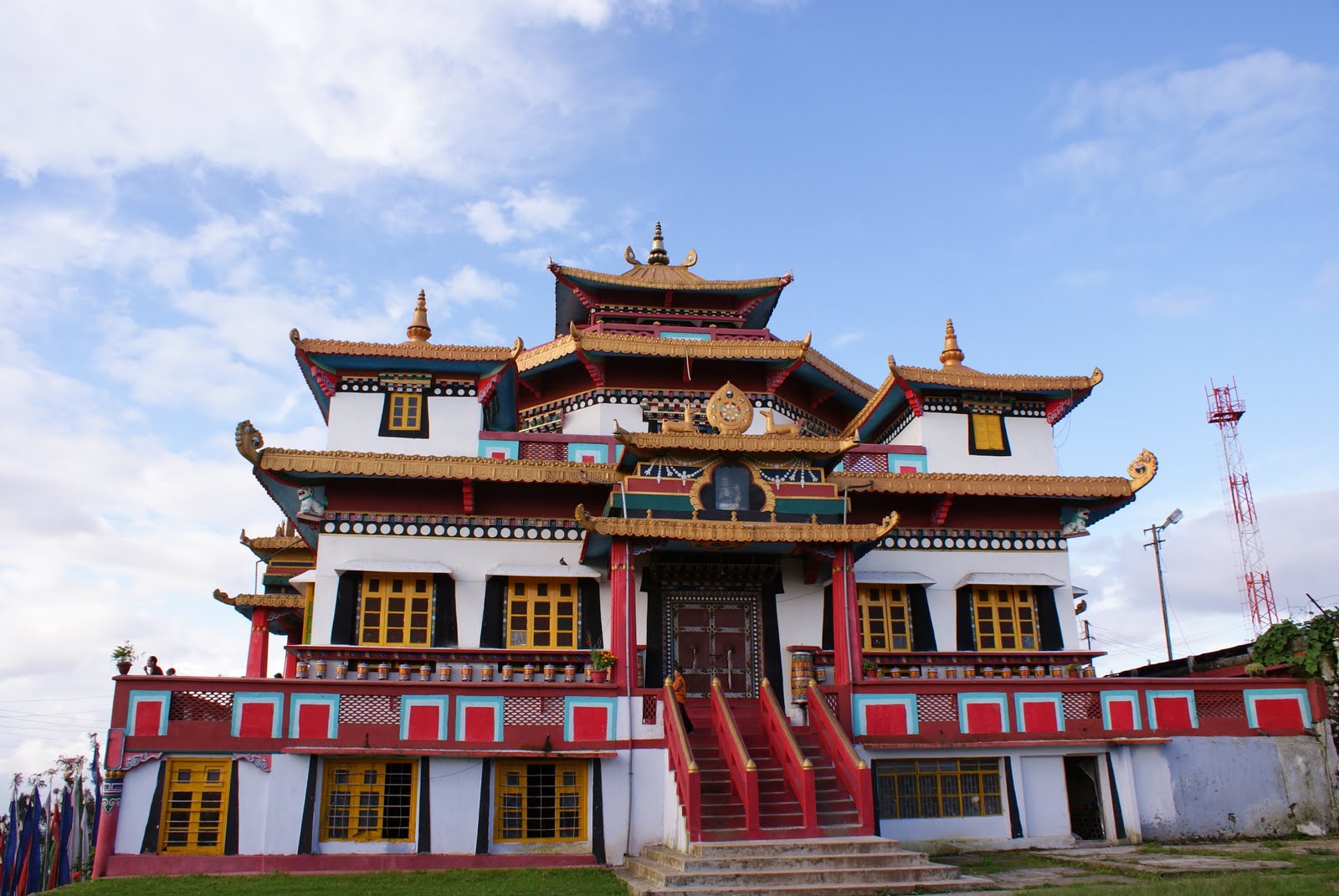
Durpin Monestary-Kilimpong
Destination Facts:
Location: West Bengal , District East Darjeeling
Altitude: 1,250 meters (4,101 ft)
Area: 1,056.5 sq km
Temperature: (Summer 10 to 28°C) & (Winter -5 to 16°C)
Languages spoken: Nepali, Bengali, Bhutia, Rai, English, Hindi etc.
Getting there:
Nearest Airports: The nearest airport is Bagdogra near Siliguri, which is at a distance of 124 km from Gangtok.
Main Railway Station: The nearest rail is New Jalpaiguri, which is nearly 148 km away from Gangtok
Main Bus Station or Road Direct: There is a regular bus service from Sikkim to Gangtok
Distance of a few Major Towns from Kalimpong:
Bagdogra -124 km and to Siliguri -114 km
Eating Around:
Multi – Cuisine, but special varieties Indian and Punjabi food.
Places of Tourist interest:
Tsomgo Lake:
It is located 35 km away from the city on the Gangtok-Nathula highway. This highway is also a part of the old route that links India and China. Worshipped by Sikkimese, this holy lake is approximately 20 km away from the Nathula Pass. The water in this lake has been accumulated from the melting snow on the mountains located nearby. Tsomgo Lake is located in the restricted area for which tourists require an Inner Line Permit. This permit can be obtained from the Police through the travel agent or Tourism Department. Tourists can also witness a small temple dedicated to Lord Shiva built on the lakeside. Around the Tsomgo Lake, primula flowers and other alpine plantation are also grown. Tourists can also take a stroll on the footpath along the lake, which leads to a resting shed located at a distance of around half a kilometre. The best time to visit this lake is from March to late May and from October to mid-December.
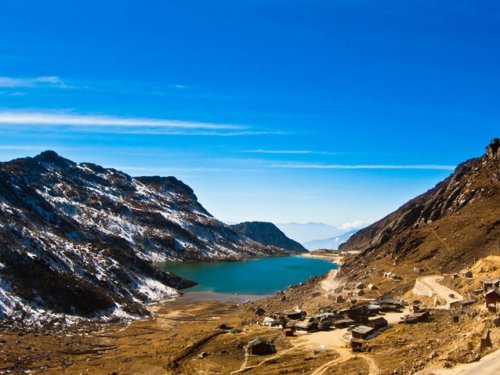
Tsomgo Lake
Himalayan Zoological Park:
Located at a distance of 3 km from Gangtok, is one of the best places for wildlife lovers. Situated in Bulbuley, the park has been established with the aim to preserve wildlife in natural habitat. It is the first park of its kind in the entire north-eastern part of India, which was established in 1991. The animals residing in this park are kept in replicated natural conditions. Most part of this park is covered with forests of Red Panda, Blue Sheep, Musk Deer, Barking Deer and Himalayan Black Bear.On passing through this park, one will come across hedged open-air enclosures. These enclosures are the habitats for Barking Deer, Panther, Red Pandas, Leopard Cat, Barking Beer, Himalayan Palm Civet and Tibetan Wolf. In addition, tourists can also spot Goral Spotted Deer and Bears. The best time to visit the park is in the months between mid- February to May and from mid- September to December.
Deer Park:
Located in close proximity to the Secretariat of Sikkim, is also known as Rustamji Park. Home to several species of Deer, this park was named after Rustamji. He was amongst one of the Dewans of the Chogyal of Sikkim. Rustamji, acclaimed himself to be the author of book 'Enchanted Frontiers'. There are few cages located inside this park that have animals like Himalayan Bear and Red Pandas. The Deer Park also houses a statue of Lord Buddha standing erect and preaching the noble truths to the followers. This entire scene depicts the reminiscent of first sermon of Lord Buddha at the Deer Park located at Sarnath in Uttar Pradesh. It is also believed that this park was constructed to celebrate the reincarnation of Lord Buddha as a musk deer. In the front of this statue, there is a butter lamp, which continuously glows and is encircled by the most beautiful flowers. The best time to visit the park is during the morning hours when tourists can spot the deer easily as that time is for their meal.
Nathula Pass:
Located at a distance of 56 km from Gangtok, is a pass on the Indo-Chinese border. Serving as a trade link between India and China, this park also once served as the main access for Sikkim-Tibet trade. Popularly known as the Silk Route, and is rich in diverse alpine flora and fauna. The Nathula Pass is divided into terms 'Nathu' and 'La', which mean 'listening ears' and 'pass' respectively. The trade route was closed down in 1961, as a result of the war between India and China. This pass is also amongst three border posts that connect China and India. The other two border posts are Shipkila (Himachal Pradesh) and Lipulekh (Uttarakhand).
Do Drul Chorten:
The biggest stupa in Sikkim, is located on the hill hock, which is adjacent to the Tibet logy Institute. Popularly known as Phurba, this stupa was built in 1945. This holy stupa was under the auspices of head of Nyingma sect of Tibetan Buddhism, Trulshik Rinpoche. The stupa is girdled with 108 prayer wheels. These prayer wheels have a holy inscription engraved on it, Om Mani Padma Hum. It is said that while turning these prayer wheels, the person has to chant the mantras engraved on them.

Nathula Pass
Fambong La Wildlife Sanctuary:
It is one of the best places to observe the wild animals. It is located at a distance of around 20 km from Gangtok. Sprawling over an area of 51.76 sq km, this sanctuary is also a home to different species such as Red Panda, Himalayan Beer and Civet Cat Binturong. Dense forests of katus, bamboo, ferns, oak, champ and kimbu also occupy the sanctuary. Tinjure is the highest point of this sanctuary This highest point also has a wooden observation tower standing erect, which is managed by the Forest Department. Around this tower, basic accommodation facilities are also available for tourists. The best time to visit the sanctuary is from March to late May and from September to mid-December.
Getting around the destination:
Continuous Bus, Minibus, Rickshaw and Auto Rickshaw Facility is provided to get around the destination in Gangtok.
Shopping Areas & Entertainment:
Woolens, Jackets, Small Souvenir, Curio, Wine, Bokhu and Carpets famous things to shop
Best time to visit:
September and June is the best time to visit.
Festivals:
Kagyat Dances, Magha Sankranti, Sagadawa and Diwali are the festivals celebrated here.
 Use Coupon code
Use Coupon code



